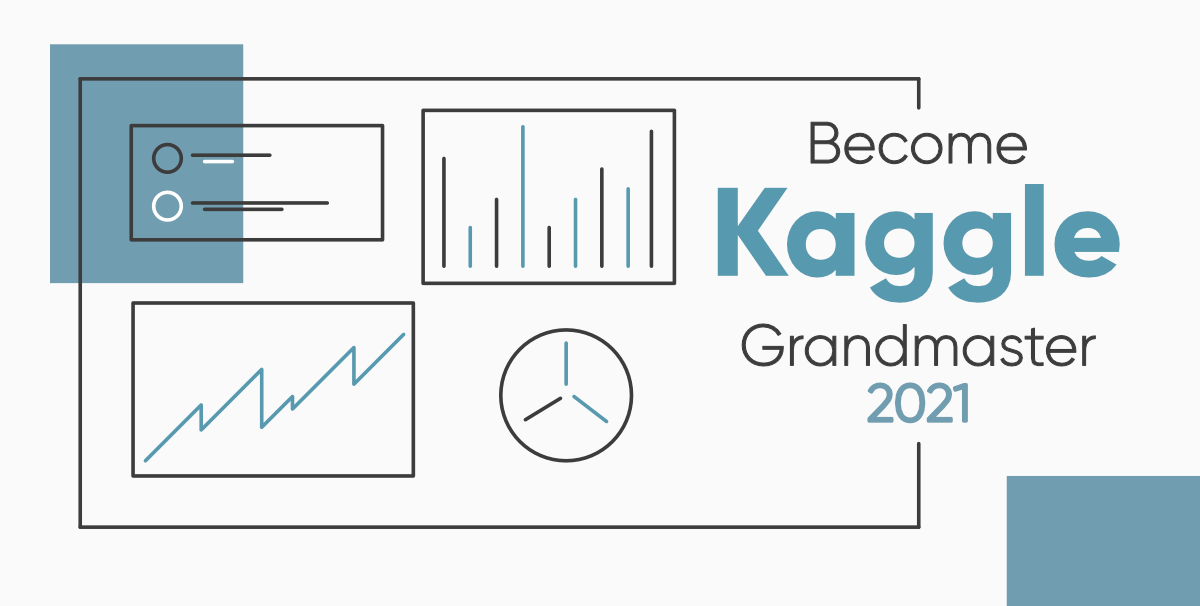If you have heard of Data Science, you have surely heard of Kaggle! It’s just the most famous platform for data science where people can learn, make new friends, take part in competitions and even earn insane amounts of prize money. But before getting started with Kaggle, it’s very important to know how it works. The more you know, the easier it is to advance through the ranks and eventually reach the top. And the top is becoming the Kaggle Grandmaster!
There are five performance tiers in Kaggle that start with Novice, move on to Contributor, Expert, Master, and finally to Grandmaster. And there are many perks to advancing through the tiers along with bragging rights. You get access to exclusive competitions and learn more from interacting with experts in Data Science. But are you wondering how to move on from Novice to eventually becoming a Grandmaster? This article provides all the details you might need to Become a Kaggle Grandmaster in 2021. So read on, and embark on this fantastic journey to knowledge, learning, and making new friends!
What is a Kaggle Grandmaster?
The Kaggle Grandmaster is the best of the best in Kaggle! After all, this is the top of the pyramid when it comes to the Competitions, Notebooks, Datasets, or Discussions. So if you are joining Kaggle, you should aim to be Grandmaster. However, it’s not easy to reach this position. There is no shortcut to becoming a grandmaster and you have to pass through all the performance tiers in including Novice, Contributor, Expert, and Master to finally reach Grandmaster! It’s a long journey but it’s worth it as it will teach you a lot in the field of Data Science and also introduce you to a lot of talented people in this field. The fact that you might win a big cash price in any competition along the journey is just a bonus!
Now, you might still be wondering what are these performance tiers in Kaggle and how to advance through each tier to finally become a Grandmaster. So let’s see that now.
What are the Performance Tiers in Kaggle to Reach Grandmaster?
You can become a Grandmaster in any one of the four categories in Kaggle namely, Competitions, Notebooks, Datasets, and Discussion. However, in each of these categories, you start as a Novice and eventually progress to becoming a Contributor, Expert, Master, and finally Grandmaster. Your highest tier in any of these categories is displayed on your main profile page. For example, you might be an Expert in Competitions, a Contributor in Notebooks, a Novice in Datasets, and a Master in Discussions but your main profile page will display Master which is your highest tier.
You advance through the tiers by obtaining medals in a competition result, gaining popularity for a notebook, dataset, comment, etc. So let’s see the specific requirements for advancing in each tier to finally reach Grandmaster.
1. Novice
You are automatically a Novice as soon as you join Kaggle. All you have to do is register! This is the most basic tier you can start at and the only way to go is up!
2. Contributor
Next is a Contributor. You advance to this tier when you have explored Kaggle fully and contributed positively to the community. There are various steps you must complete before becoming a Contributor including adding personal information to your profile such as your bio, location, occupation, organization, etc. You also need to verify your account using SMS and engage in all the Kaggle categories by running a script, making a comment, taking part in a competition, casting an upvote, etc.
3. Expert
You become an Expert once you have worked enough on Kaggle to have some experience in Competitions, Notebooks, Datasets, and Discussions. To become an Expert in competitions, you need 2 bronze medals, for Datasets you need 3 bronze medals, it is 5 bronze medals for Notebooks, and last but not least 50 bronze medals for Discussions. Now you might be wondering what are these medals and how can you earn them?
Well, the Kaggle medals are awarded for excellent and praiseworthy work in all the different categories. There are varied rules for how you can earn medals. For example, Competition medals are given for top performance in competitions. Dataset Medals are given to popular datasets that receive high upvotes. It is similar for Notebook and Discussion Medals as they are provided based on a high number of upvotes. If you want to know more, you can see the specific rules for getting medals on the Kaggle website.
4. Master
After becoming an Expert, the next step is Master. You only reach this honor when you demonstrate your mastery over any one of the Competitions, Notebooks, Datasets, or Discussions. Maybe even more than one also! And there are also many perks to reaching this stage. Now you can participate in exclusive Master-Only competitions that are not available to other people.
But how to reach here? To become a Master in Competitions, you need 1 gold medal and 2 silver medals. For Datasets, the requirement is 1 gold medal and 4 silver medals and for Notebooks, you only need 10 silver medals. As for discussions, it’s 50 silver medals and at least 200 medals in total.
5. Grandmaster
And now comes the Grandmaster tier. The aim of every Novice on Kaggle! You can’t do any better than Grandmaster on Kaggle so it’s not easy to reach here. You need to demonstrate outstanding and exemplary performance in any one of the Competitions, Notebooks, Datasets, or Discussions to advance here. Reaching Grandmaster means you are the best of the best!
And you need to work hard for that. To become a Grandmaster in Competitions, you need 5 gold medals and a solo gold medal as well. For Datasets, the requirement is 5 gold medals and 5 silver medals and for Notebooks, you only need 15 gold medals. As for discussions, it’s 50 gold medals and an insane amount of 500 medals in total.
Now that you know all the steps in becoming a Grandmaster, you should go ahead and embark on this journey. It is certainly not easy and your success depends on how hard you work and your level of dedication. While it is easy to move from a Novice to a Contributor, rising to a Grandmaster is another ball game! You need to consistently learn more in data science, actively participate in discussions, and take part in competitions. However, if you work hard and consistently engage with Kaggle, you can surely succeed. So, all the best for your journey, and may you be a Kaggle Grandmaster one day!





